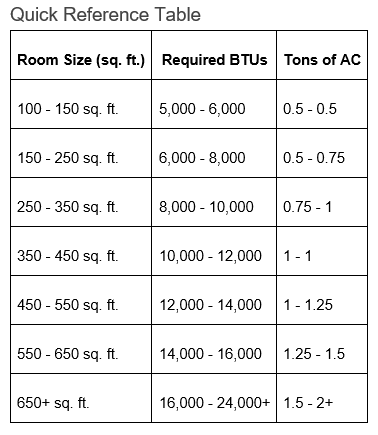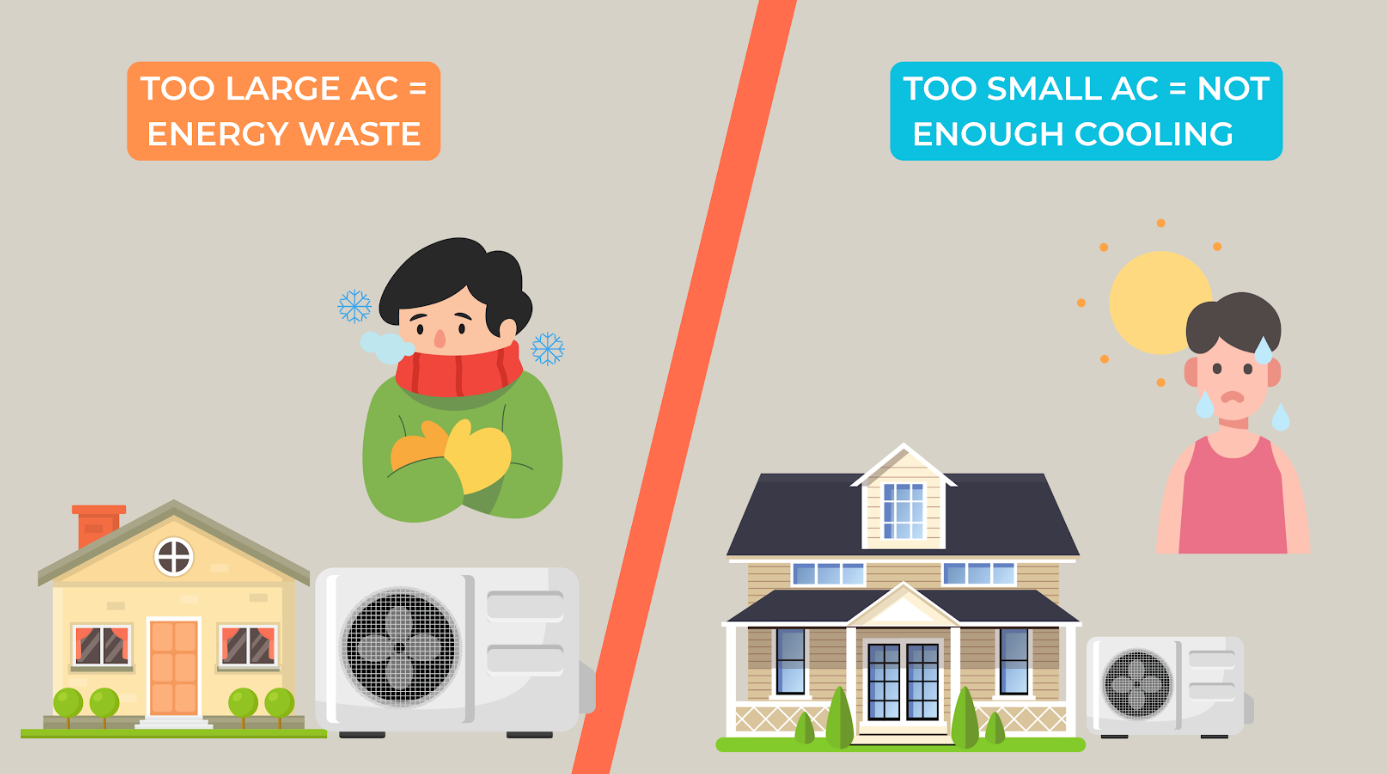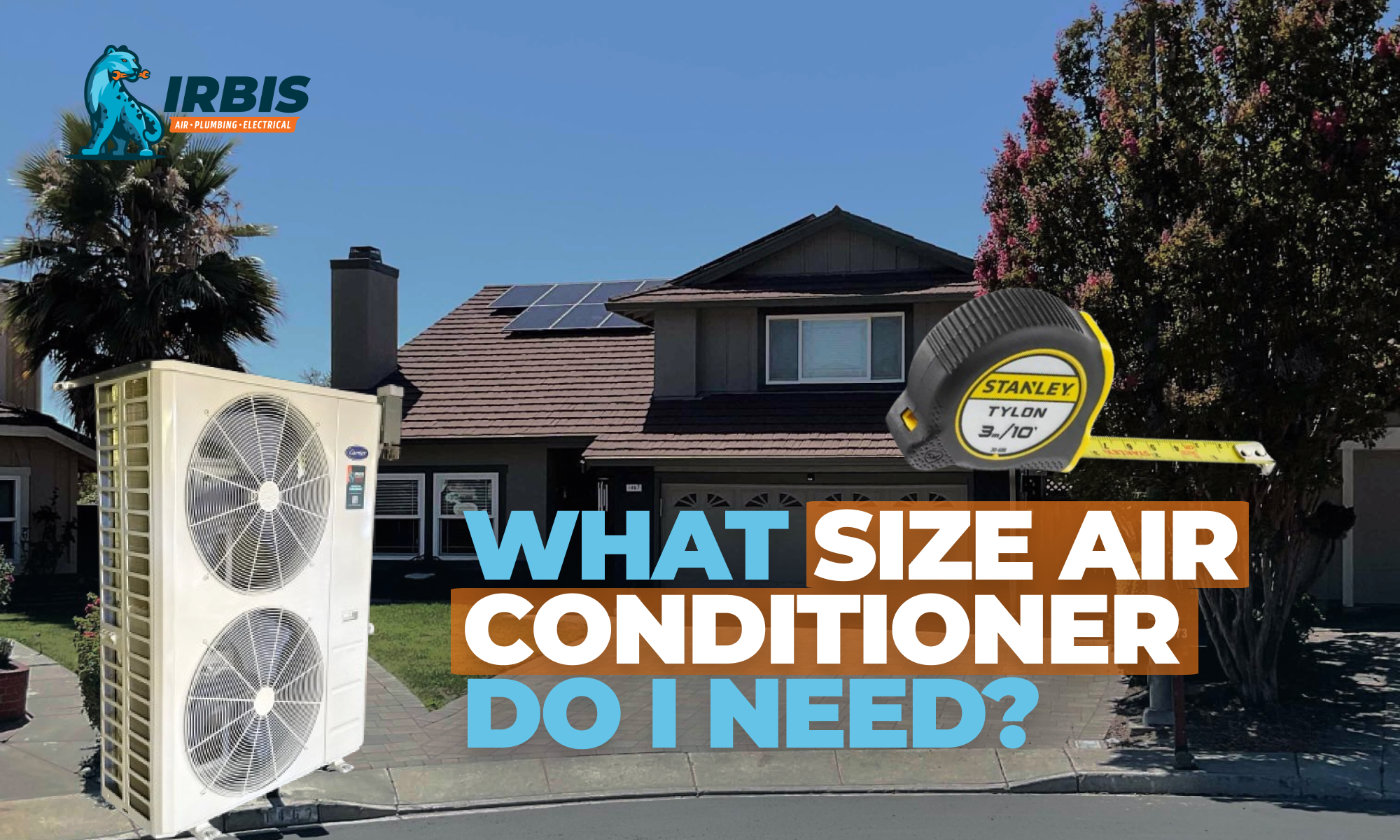
When homeowners start asking “what size AC do I need?” most expect a simple number in BTUs or tons. But here’s the truth: choosing the right air conditioner is about much more than just the raw cooling capacity. A properly sized AC is not only about BTUs (British Thermal Units) or tons of cooling power—it’s about achieving consistent, comfortable temperatures throughout your entire home.
The right system should cool every room evenly, without hot spots, wasted energy, or constant cycling on and off. And that requires more than just a quick calculation of square footage. It depends on the overall design of your HVAC system—how your furnace and air conditioner work together, how your ductwork is laid out, and how well your home is insulated.
In other words, the size of your AC is just the starting point. To enjoy true comfort and efficiency, you need to consider the whole system.
AC and Furnace — Always Together
Traditional central air systems don’t work in isolation. Your air conditioner always operates alongside your furnace, which provides the heating and often houses the blower that moves air through your home. This means the size of your AC and furnace must be matched for optimal performance.
Even if you already have a working heating system, it’s important to consider its capacity when selecting a new air conditioner. A properly sized AC will complement your furnace, ensuring your home cools efficiently without overworking the system.
In practical terms, AC size is usually measured in tons, while furnaces are rated in BTUs. Although they use different units, these measurements are closely linked: a mismatch can lead to uneven cooling, higher energy bills, and unnecessary wear on your equipment.
BTU and Tons — Basic Calculations
When homeowners ask “how many BTU do I need?” or “how many ton AC do I need?”, it’s easy to get lost in numbers. Here’s the basics:
- BTU (British Thermal Unit) measures the cooling power of a furnace or AC in terms of heat energy.
- Ton is a common unit for air conditioners, where 1 ton = 12,000 BTUs per hour.
Simple Formula for Homeowners
A practical starting point is to calculate cooling needs based on your home’s square footage:
BTUs needed = Room or Home Square Footage × 25
For example:
- A 400 sq. ft. room: 400 × 25 = 10,000 BTUs
- Convert BTUs to tons: 10,000 ÷ 12,000 ≈ 0.83 tons → a 1-ton AC would be suitable
To make the process even easier, you can use the AC BTU Calculator to get a more accurate estimate based on your specific room dimensions and conditions.

This gives homeowners a realistic starting point for choosing an AC. But keep in mind—these numbers are a guideline. The actual size may vary depending on insulation, ceiling height, and sun exposure.
Important Adjustments to Your Calculations
While the basic BTU and ton calculations provide a good starting point, several key factors can affect your home’s actual cooling needs:
- Ceiling Height
Standard calculations assume 8-foot ceilings. If your ceilings are higher, you’ll need 10–20% more cooling capacity to maintain comfort. - Sun Exposure and Windows
Rooms that receive direct sunlight—especially west- or south-facing rooms—gain extra heat. Large windows or glass doors can increase the cooling load, so you may need a larger AC unit for these spaces. - Insulation
A well-insulated home retains cool air effectively, reducing strain on your system. Poor insulation, especially in older homes, increases the cooling load. Consider insulation upgrades if your AC struggles to maintain consistent temperatures. - Local Climate
San Jose and the Bay Area experience hot, dry summers. Peak temperatures can exceed 90°F (32°C), which means your AC must handle extreme heat without overworking.
By considering these adjustments, you ensure your AC is accurately sized for real-world conditions, not just theoretical calculations.
Ductwork Design and Airflow
Even the perfectly sized air conditioner can fail to cool your home efficiently if the duct system is poorly designed. Airflow distribution is critical to avoid hot spots, cold spots, and wasted energy.
Key Considerations:
- Balanced Airflow
- Each room should receive the right amount of air.
- Improper duct sizing can cause some rooms to be overcooled while others remain warm.
- Use of Dampers
- Dampers allow you to adjust airflow in specific rooms.
- This is especially useful in larger or multi-level homes where cooling needs vary by space
- Multiple Duct Runs for Large Rooms
- Big rooms or high-ceiling spaces may require two duct runs to distribute air evenly.
- Avoiding Conflicting Airflows
- Poor layout can create areas where air currents conflict, reducing efficiency and comfort.
- Professional duct design ensures smooth, uninterrupted circulation throughout your home.
By optimizing ductwork and airflow, your AC can perform at its full potential, keeping every room comfortable without overworking the system.
The Role of Insulation
Even a perfectly sized AC with well-designed ductwork can struggle if your home is poorly insulated. Insulation acts as a buffer, keeping cool air inside and hot air out, which directly affects comfort and energy efficiency.
Key Areas to Consider:
- Attic Insulation
- The space between your ceiling and roof, often called the attic, is a major source of heat gain.
- Proper insulation here prevents your AC from overworking during hot days.
- Walls and Floors
- Well-insulated walls and floors reduce heat transfer from outside, keeping interior temperatures stable.
- Windows and Doors
- Large windows or glass doors without proper insulation or shading can increase cooling demands.
- Consider window treatments or low-E glass to minimize heat gain.
Why It Matters

Without proper insulation, even a correctly sized AC can’t maintain consistent temperatures. Hot or cold spots may form, energy bills rise, and the system experiences unnecessary wear. Investing in insulation ensures your AC works efficiently, extending its lifespan and maintaining comfort throughout your home.
Conclusion
Choosing the right size air conditioner is just the beginning of creating a comfortable, efficiently cooled home. True comfort comes from a combination of:
- Correct AC size (BTUs and tons)
- Properly matched furnace
- Well-designed ductwork for balanced airflow
- High-quality insulation to maintain consistent temperatures
By considering all these factors, homeowners can avoid hot spots, wasted energy, and unnecessary wear on their HVAC system.
At IRBIS HVAC, we help homeowners in San Jose and surrounding areas select the perfect air conditioner for their home. Our experts ensure the AC is correctly sized, the ductwork is optimized, and your home stays cool and comfortable year-round.
Order your air conditioner installation with the professionals at IRBIS HVAC today! Our experts are here to guide you every step of the way, ensuring you get the best possible cooling solution for your home.

